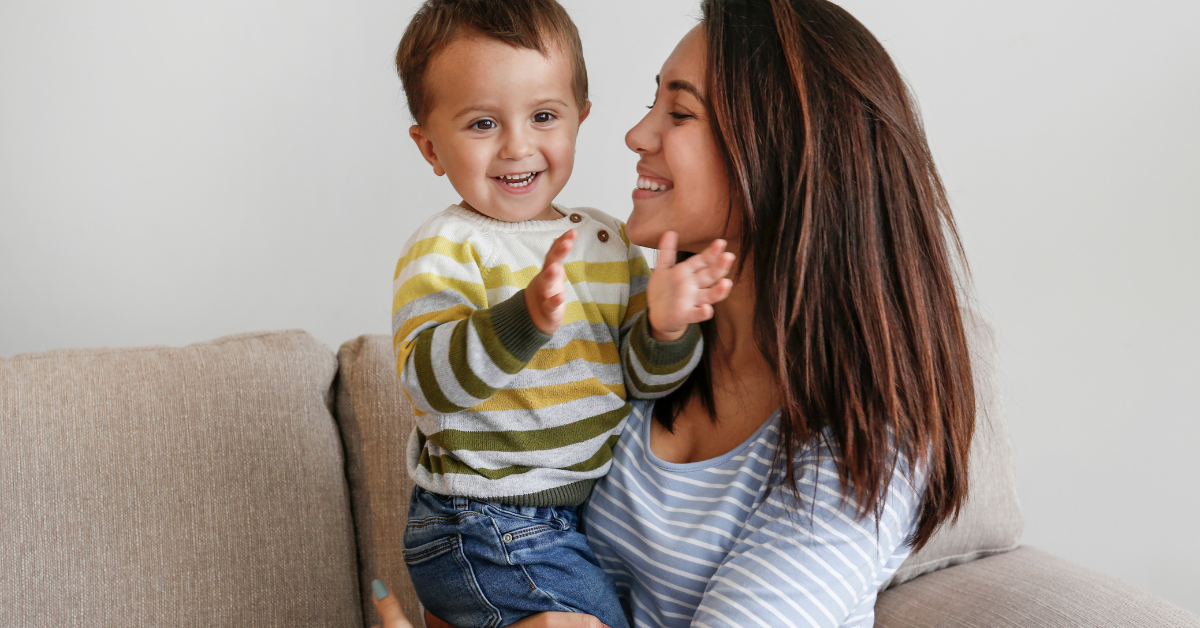Considering Adoption After Infertility: What You Need to Know
Considering adoption after infertility can bring a lot of questions, and figuring out how to make the right decisions can feel overwhelming. We hope that these frequently asked questions and answers will provide you with clarity and guidance as you determine your next steps.
You can check out more resources about adoption after infertility here.
To answer this question, consider why you are choosing to adopt. Are you making this decision because you feel hopeful and ready to embrace something new? Or do you feel that adoption is your only option?
While there is no right or wrong answer to these questions, it is important to be honest with yourself and to pace your adoption based on your answer. Couples who have spent years experiencing infertility will need time to process the grief and loss of knowing they may not have a biological child. Adoption is not a cure for infertility and adopting a child won’t automatically resolve this grief and loss. Grief is a difficult, yet necessary first step in adopting after infertility. While this grief may never go away completely, you should reach a place where you can manage these feelings in a healthy way.
It is best for you, your partner, and the child that you adopt that you don’t rush this step. Make sure that you take the time you need to work through these emotions, so that you are emotionally ready to prioritize the child that you will welcome into your lives. If you feel that you are in that place, you are likely ready to pursue adoption.
In addition, some adoption agencies require that families with a history of infertility wait at least one year, to process infertility grief before adopting.
- Fully process your infertility.
- It is important that you don’t rush into an adoption. While feelings of grief and loss may never completely go away, ensure that you are emotionally ready for this new journey.
- Get on the same page as your partner.
- Ensure that your partner has also processed your infertility and feels ready to pursue other parenting options. Discuss alternative parenting options and ensure that you and your partner feel adoption is the right fit.
- Shift to the adoption mindset.
- Start reading about real foster care or adoption experiences. Consider the differences in parenting an adopted child such as maintaining birth family relationships, having different genetic histories, and possibly parenting a child of a different race or culture.
- Start learning about the adoption process. Adopting a child will include an application and evaluation process. This can include interviews, home walk-throughs, proof of financial stability, and additional paperwork.
- Ensure that you are financially prepared.
- Many individuals seeking adoption after infertility have already made a significant financial investment in fertility treatment. Ensure that you are financially prepared to cover the costs of an adoption as well as the costs of meeting a child’s ongoing needs. It is important to note that many adopted children have additional medical, mental health, or special needs. Many families may choose to wait and save more, prior to pursuing adoption.
- Information on the average cost of adoption is available below.
At this point you’ve processed your infertility, determined that adoption is the right fit for you, and are looking to start the adoption process.
- Determine which type of adoption you want to pursue
- This step can happen before or after finding an adoption professional, and you don’t need to have a firm decision on this prior to doing so.
- Do some research about the types of adoption and consider the ages or needs of children you would like to adopt. Establish a general idea of what you feel would be the best fit for your family. You adoption agency or attorney can answer any specific questions and can help narrow down your options further. If you are interested in intercountry adoption, it is important to choose an adoption agency that facilitates adoption in your country of interest.
- The types of adoption are: private domestic, intercountry, and adoption from foster care. For more information on types of adoption, please review the resources included on the last tab.
- Connect with an adoption professional
- More information on this is available below.
- Complete pre-adoption education
- Attend mandatory trainings and optional education courses provided by your adoption agency, adoption attorney, or trusted resource.
- Complete required documentation
- Receive a referral or match with the child
- Identify post adoption resources specific to your family’s needs
- Finalize your adoption
The length of an adoption process can vary greatly. In general, you can expect an adoption to take 1.5 to 2.5 years.
On average private domestic adoptions take one to two years, intercountry adoptions take two or more years, and adoptions from foster care take one year to be finalized after parental rights are terminated. These wait times vary widely based on a number of factors.
Generally, the adoption timeline includes the pre-placement application, the waiting period, the placement period, and adoption finalization.
- The application process takes from six months to over one 1 year. This process involves the paperwork, home study, and other requirements needed to be considered a “waiting family” that is ready to be matched with a child.
- After finalizing your application, the waiting period to be matched with a child varies widely. The wait is shorter if you are open to adopting children of different races or with special needs.
- The placement process is when a child is placed in the home, but the adoption is not finalized, and involves check-ins from your adoption agency. For private domestic adoption, this placement period averages six months to one year. Adoption from foster care has a 6-month minimum before finalization. For intercountry adoption, the finalization process varies. See our intercountry adoption resources for more information. Some countries also require families to stay in their area for a short period after adoption, and some require six-month or annual follow ups.
The cost of adoption varies greatly depending on the type of adoption you choose to pursue and the agency that you choose to work with. Additionally, some agencies adjust their fees based on family income.
Adoption from foster care: Most adoptions cost less than $1,000. Adoption from foster care is often free if you adopt through the public child welfare system. If you adopt through a private agency, costs average around $11,000.
Intercountry adoption: Intercountry adoption costs often range from $30,000-$45,000. Intercountry adoption costs are often higher due to foreign travel, immigration processing, court costs, adoption education for prospective adoptive parents, and related documentation. Costs also vary widely depending on the country that you choose to adopt from.
Private domestic adoption: The average cost is $45,000. Private domestic adoption costs often range from $30,000 to $75,000 with an agency. The cost of private domestic adoptions has doubled in the last decade. Primary costs include birth parent fees, agency fees, the cost of adoption profiles, home study services, court and legal costs, and adoption education for prospective adoptive parents.
There are a number of available financial assistance resources for adoption, including grants, loans, tax credits, subsidies and employer benefits.
Tax Credits: There is a nonrefundable federal Adoption Tax Credit. There are specific eligibility requirements and guidelines for eligible expenses. Ensure that you keep track of all receipts, agency fees, and attorney fees so that you can claim this credit. Please refer to NCFA’s Adoption Tax Credit FAQs article for more information. Several states also offer adoption tax credits.
Grants and Loans: There are many grants available for prospective adoptive parents ranging from $500-$5,000 or more. Low-interest and no-interest adoption loans are also available between $3,000-$8,000.
Subsidies: These benefits are available to most children adopted in the U.S. from foster care and children with special needs adopted privately. These benefits usually include a monthly stipend, Medicaid (or its state equivalent), one-time reimbursement towards adoption expenses, and access to post-adoption support services.
Employer provided benefits: Many companies and organizations offer benefits such as leave or financial assistance to their employees who are adopting. Your employee benefits office will be able to tell you if your company participates, or you can search The Dave Thomas Foundation for Adoption Best Adoption-Friendly Workplaces List to see if your company is listed.
Choosing an adoption professional is one of the most important parts of the adoption process. It is critical that prospective adoptive parents invest the time to ensure they understand the core issues, how to evaluate their options, and how to make a wise decision. Most adoption professionals have experience working with individuals with histories of infertility. We have created a list of questions we recommend asking an adoption professional before beginning adoption services with them.
- Do your research
- Look for experienced professionals
- Expect high-quality pre-adoption orientation, education, and training.
- Look for an agency whose information is trustworthy
- Pay attention to the level of responsiveness
- Sample questions to ask an agency:
- Please note: These are just a few questions that we recommend you ask your agency. See below for a more information.
- What experience do you have working with individuals with histories of infertility?
- What happens if we become pregnant during the process?
- How long is the average wait time? What are the factors that influence a family’s wait time? Do you have a wait time required for families with histories of infertility?
- If we change our minds and want to pursue a different type of adoption, what would that process look like and how much would it cost?
- What type of pre-adoption education does your agency provide?
- Can the agency provide references from several families that have adopted through the agency? Can they produce references for the type of adoption you are considering?
- What is the agency’s matching protocol and process?
- More information:
Generally, this is not recommended. While you can pursue fertility treatment and adoption at the same time, this can be too trying for many families. It is important to assess where you’re at and determine if this is the best decision for you. It is important to recognize your loss and set realistic expectations of what your family may look like. Ask yourself: would you feel equally happy with adoption and pregnancy? Don’t pursue adoption and fertility treatment simultaneously if adoption is your safety net. For families who believe they can balance both, feel free to pursue this and many agencies will support you.
If you choose to pursue both adoption and fertility treatment, it is important to create a plan. First, communicate with your agency. Do not pursue fertility treatment without informing your agency. This is likely a requirement at your agency, and could jeopardize your ability to adopt. Next, ensure that you’ve established an end point for pursuing fertility treatment. Most agencies will recommend or require that families stop treatments once they are matched or referred to a child. At that point, families must be ready to focus their financial and emotional energy on the child that they are adopting.
In addition, consider the complexities of pursuing both adoption and fertility treatment simultaneously. There are rarely restrictions on pursuing fertility treatment, however, most agencies and countries have rules regarding being pregnant while adopting. Many agencies will place a couple on hold until the baby is born and will allow them to reapply six months or one year after the birth. Being pregnant may also impact your eligibility to adopt from some countries. It could also influence a birth parent’s decision to choose you as the adoptive parent.
Yes, you can. It may be hard to imagine now, but you can love your adopted child as much as a biological child. Many women have concerns about missing the attachment that comes from being pregnant with a child. While this is a valid concern, it is important to know that this is not the only way to form a strong attachment with a child. When you adopt a child, you immediately begin to develop an attachment and bond with them. This happens every time you feed, hold, and play with your child by meeting their needs and providing affection, security, and love.
- Adoption After Infertility
- Adoption 101 for People Experiencing Infertility
- Adoption Finance 101 for People Experiencing Infertility
- Guide to Intercountry Adoption
- Guide to Adoption from Foster Care
- Guide to Domestic Infant Adoption
- Considering Adoption After Infertility: What You Need to Know
- Choosing an Adoption Professional
- Agency or Attorney? Which is right for me?
- Adoption Financial Resources
- Planning for Adoption: Knowing the Costs and Resources
- A Guide to Adoption Subsidies and Assistance for Adoptive Parents
- Adoption Assistance/Subsidies by State (1)
- Adoption Assistance by State (2)
- About the Adoption Tax Credit
- Adoption Tax Credit FAQ
- The IRS’s Guide: Adoption Credit and Adoption Assistance Programs
- ACCU Adoption Loan
- Tinina Cade Foundation Grant
- Infertility and Adoption Support Grant
- Best Adoption-Friendly Workplaces List
- Employers that Offer Financial Reimbursement and/or Paid Leave After Adoption
- Adoption Benefits for Military Personnel
Related Resources

Adoption After Infertility: Grieving What Could Have Been and Moving Forward

How Adoption Professionals Can Support Prospective Parents Moving from Infertility Treatment to Adoption
Adoption Advocate No. 106

Domestic Infant Adoption
Adoption can be a positive option for all members of the triad; infants placed for adoption grow up in a loving family, birth parents who are not ready to parent are given the opportunity to move forw...

Can I Adopt a Baby from Foster Care?
In May, we recognize National Foster Care Awareness Month. In the same breath, we advocate for children in foster care who wait for adoptive families.
